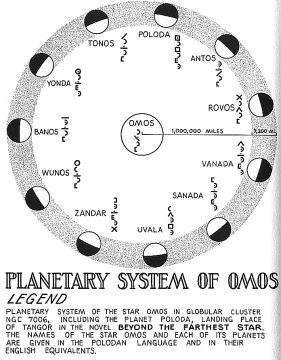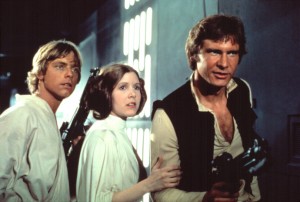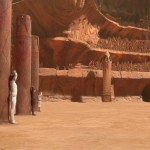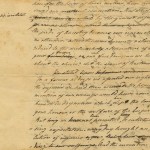The beginning of ERB’s Planet of Poloda that created his sci fi thriller BEYOND THE FARTHEST STAR.

I can appreciate, in a small way, the swell time God had in creating the universe.
Burroughs’ letter to Prof. J. S. Donaghho, November 23, 1940
Thus, seventy-five years ago today, did Burroughs conclude a brief but fascinating correspondence Prof. Donaghho, an astronomer at the College of Hawaii regarding the science of the author’s new creation, a distant solar system for BEYOND THE FARTHEST STAR. This is how Irwin Porges introduces it in his ERB biography.
____________
Apparently feeling too confined in the worlds of Mars, Venus, and Pellucidar, Burroughs envisioned an entire new solar system as a setting for an adventurer from the earth. With his novelette “Beyond the Farthest Star” almost finished—it was again designed to launch a three- or four-part series—he became aware of a number of astronomical problems and sought the advice of an expert. On November 1, 1940, he began a correspondence with Professor J. S. Donoghho, also living in Honolulu, obtaining his name from a friend, Dr. Livesay. Ed wrote, “The problem is in relation to one of those very profound classics which I have been inflicting on a very tolerant world for a quarter of a century,” and explained the nature of his enclosed pencil sketch: “…a diagram of an imaginary solar system consisting of a small sun and eleven equally spaced planets. An atmosphere belt rotates about the sun at the same speed as the planets.”
To Donoghho he posed four questions concerning the orbits of the planets, their visibility at night and day, the type of ocean tides that might be produced on a certain planet, and the particular visibility to the other planets of a “sphere” about eight thousand miles in diameter. (Porges, p. 669)
____________
Donaghho proved quite helpful to Burroughs in most respects but not quite all: the atmospheric belt would most assuredly not, in the professor’s words, “stay put.” Porges goes on to wrap up his story of their exchanges.
____________
In the final letter of correspondence, on November 23 Ed wrote, “You have proven yourself a real benefactor to the human race of Poloda (Planet P) by lowering the tides so as to permit ocean navigation.” However, the atmospheric problem had not been solved, and Ed commented jokingly, “In the little matter of the atmosphere belt, there are two schools of thought on Poloda: One adheres to the Donaghhoan theory, while the other, hopefully anticipating inter-planetary navigation, clings stubbornly to the Borroughsian theory.” Concerning the fun Donaghho had found in the queries, Ed stated, “I find fun in the imaginings which prompt them; and I can appreciate, in a small way, the swell time God had in creating the universe.” (Porges, pp. 670-1)
____________
Images
“Planetary System of Omos” and “Poloda,” from the Canaveral Press book, TALES OF THREE PLANETS (1964)
http://www.erbzine.com/mag8/0862.html
Frank Frazetta cover art for the 1964 and 1969 Ace editions of BEYOND THE FARTHEST STAR
http://www.erbzine.com/mag8/0862.html










